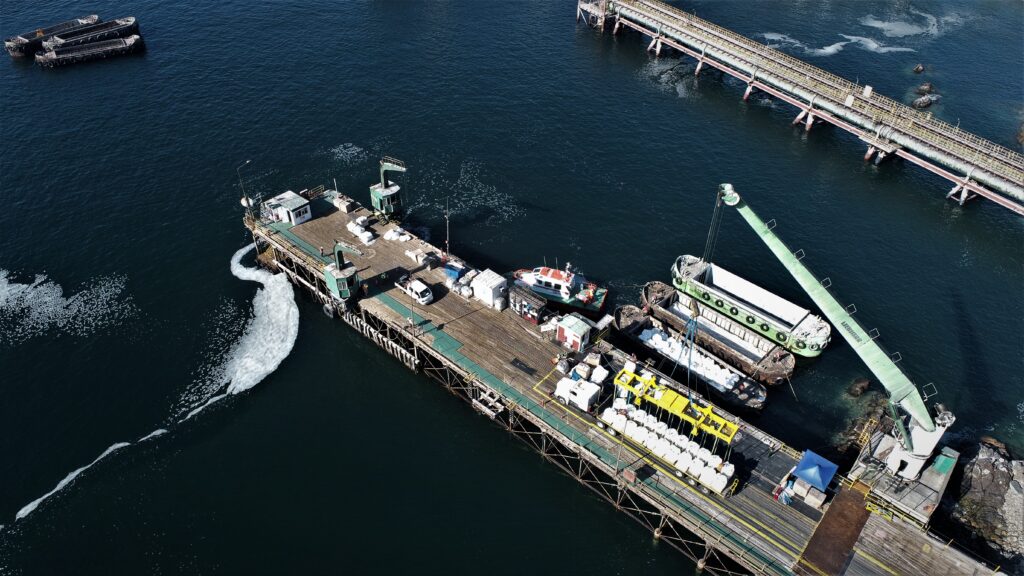At the Port of Tocopilla, operated by SQM, one of the main challenges is to replace part of the electricity use with locally produced renewable energy. The port requires a significant amount of energy for its daily operations, which include tasks such as loading and unloading ships, lighting, and other services.
To address this challenge, the company is seeking solutions that utilize various renewable energy sources, with a particular focus on marine energies, such as wave energy (generated by the movement of waves) and sea current energy. These alternatives aim not only to reduce dependence on traditional energy sources and decrease operational costs but also to promote environmental sustainability.
Additionally, is it considered to integrate these marine energies with other renewable sources, such as solar and wind, to create a hybrid system that optimizes the port’s energy efficiency. This approach would help advance toward carbon neutrality and ensure a constant and sustainable energy supply, contributing to global sustainability goals.
It is important to note that land availability at the port is limited, so priority should be given to technologies that utilize the sea as both a source and a surface for electricity generation.

How will we evaluate your solution?
It is required that the overall solution meets a minimum generation of 40.000 Kw/year.
Additionally, the solution must provide a detailed simulation of the process, explaining how the equipment will function and its integration with battery storage stations. This simulation is crucial for evaluating the feasibility and effectiveness before implementation.
The solution should be flexible regarding the use of various renewable energy sources, with an emphasis on marine energies such as wave and ocean current energy, without excluding the possibility of integrating other sources such as solar and wind.
Additionally, the Proof of Concept (PoC) is expected to include not only detailed simulations but also the possibility of conducting an on-site pilot at scale. This pilot will allow for the validation of real operating conditions and the efficiency of the proposed system, providing concrete data before its large-scale implementation.
Regarding the key parameters for evaluating the proposed technologies, the following will be considered:
- kWh generated: This will allow to measure the amount of energy produced by the technology.
- Levelized Cost of Energy (LCOE): Expressed in USD/kWh, this parameter will help compare the cost of the energy generated with other sources.
- Capacity factor (%): To evaluate the efficiency and reliability of the proposed technology.
- Energy Return on Investment (EROI): An indicator that measures efficiency from an energy perspective, comparing the energy obtained with the energy invested.
- Environmental and social impact of the project during the pilot phase, ensuring that negative effects are minimized.
The PoC is expected to include a scalability plan to facilitate large-scale implementation if the pilot is successful.








